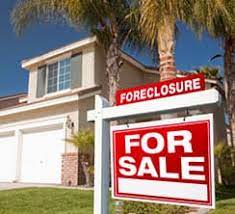Bankruptcy attorney in Ontario
Los Angeles is the second
largest metropolitan area in the United States after New York with a population
of over 18 million people. Los Angeles is a costly city to live, create and
maintain a business. Wages have remained stagnant in a troubled economy. Many
people use credit cards to help them start up and grow their businesses, pay
for unforeseen medical expenses, and keep up with today's escalating living
costs. If credit card limits are reached, business failures or alternate
sources of money are no longer accessible to sustain a family, the credit card
debt can become unmanageable. If this happens, contact one of our Los Angeles
bankruptcy lawyers for help.
Whether you want to submit a bankruptcy claim pursuant to Chapter 7 or Chapter 13 or Chapter 11 or are unsure what type of bankruptcy protection best fits your needs, a Los Angeles bankruptcy lawyer should be consulted to discuss these and other questions concerning your present financial status.
Our lawyers in Bankruptcy Attorney in Ontario Group process the following forms of bankruptcy
filings:
Chapter 7
A Chapter 7 Bankruptcy is a
debt liquidation process. It can all benefit individuals, couples, small
businesses, limited liability companies and companies. You must first achieve
certain eligibility standards, including as passing a medium test, before you
may apply for bankruptcy. This chapter allows you to file if in some
circumstances you are a single individual with an annual income of $48,498 or
less. The average household income of four is $76,211 per year. The income
ceiling is usually raised by a percentage point every April. Although your
median earnings are higher than the current level, you may still be eligible if
your disposable earnings are less than a certain threshold amount. Ask one of
our Los Angeles bankruptcy lawyers to free consultation to learn whether you
qualify. Even if you don't believe you can qualify.
The thirteenth chapter is
titled 'Chapter 13: A Chapter 13 or 'Salary Earners' plan is an alternative for
the owners of small companies, those who are not eligible for Chapter 13,
bankruptcy and homeowners facing foreclosure. Whenever you file a bankruptcy
under this chapter, you have to include a repayment plan for a period of three
to five years that calls for the return of your obligations. Uninsured
creditors are rewarded for a percentage of debt. In order to qualify for
compensation, they must nonetheless have a strong and persistent source of
income. A single monthly payment is required during the length of the plan. In
order to prevent the forfeiture, homeowners who fell behind on their mortgage
payments have to be able to retain their existing monthly mortgage payments
while paying the arrears over a period of three or five years. A second
mortgage is generally released on your house at the end of the plan, if you
have one.
Chapter 11 – Apprenticeship
Chapter 11, which is a
process of reorganisation, is more extensive. This chapter allows major
companies, partnerships and even individuals to seek protection against
bankruptcy. In some cases, creditors may require that an unintentional petition
be submitted. As for the debtor-in-possession, you typically submit a written
disclosures and reorganizational plan similar to other chapters of the
bankruptcy code, where you submit schedules of your debts, assets and financial
matters, which will be confirmed by the debtors and then approved in writing by
the bankruptcy tribunal. You can keep operating as a debtor and fulfil obligations
such as renegotiating leases and contracts under more favourable conditions and
refunding creditors at a discounted rate while you are in this position.



Comments
Post a Comment